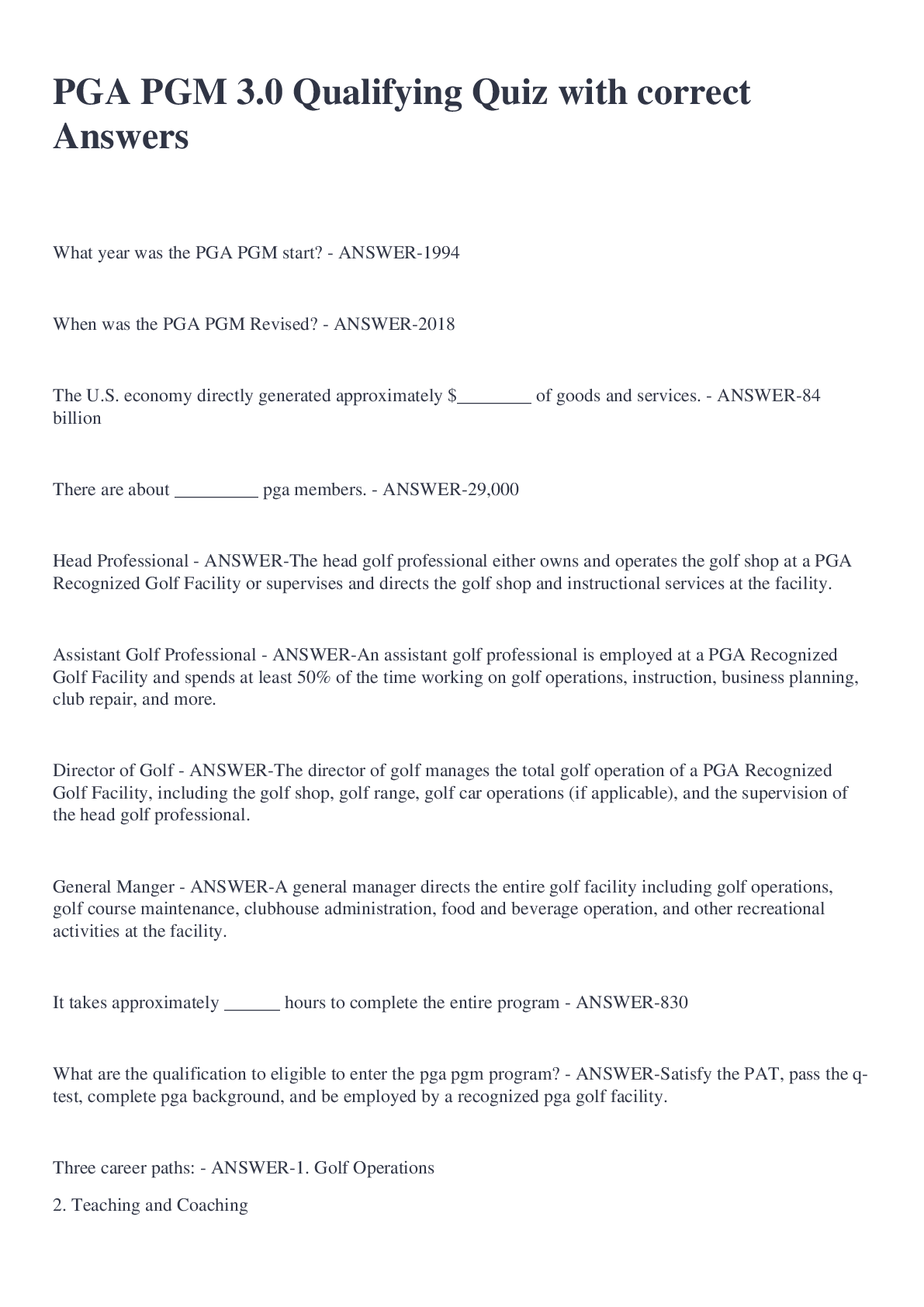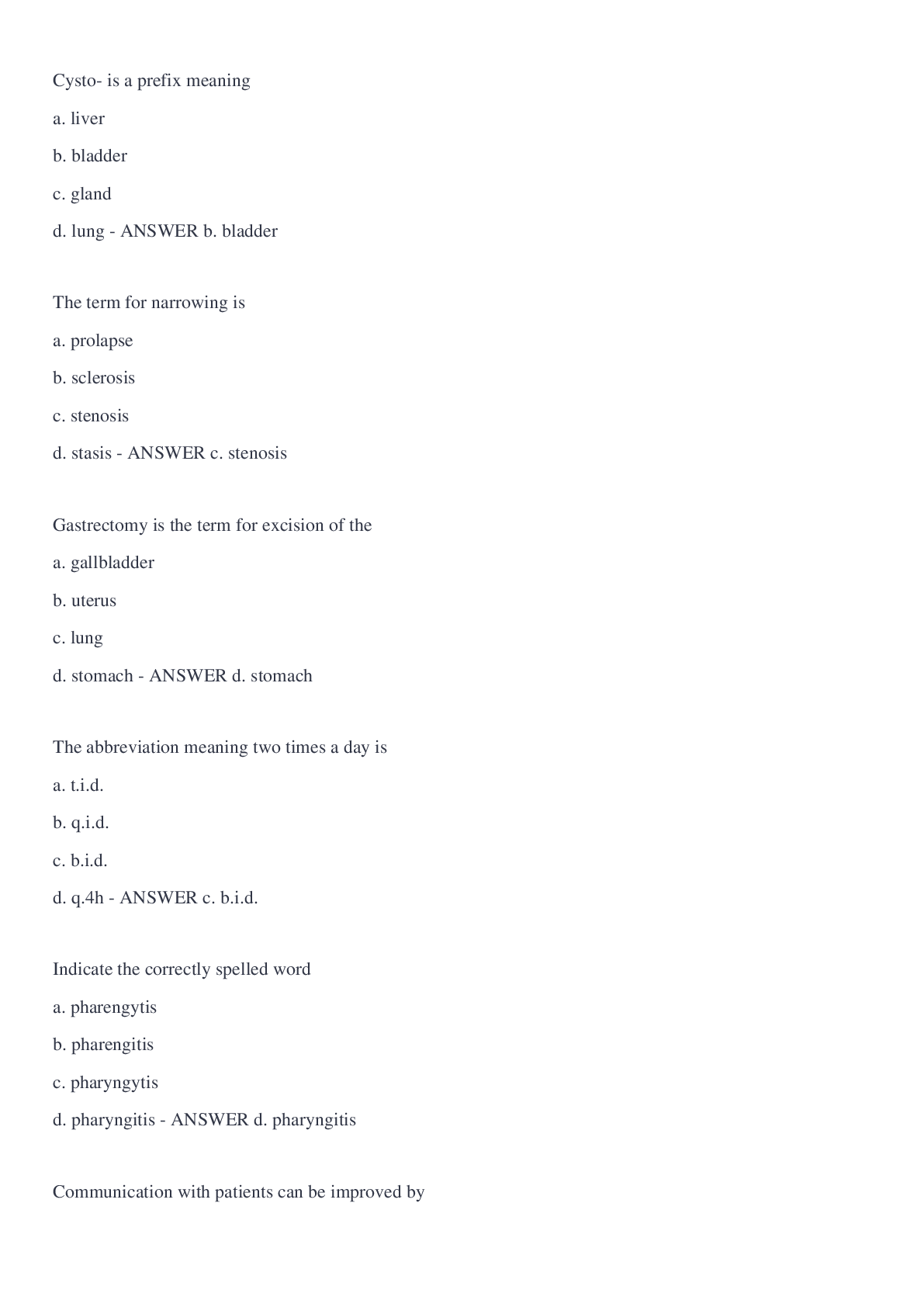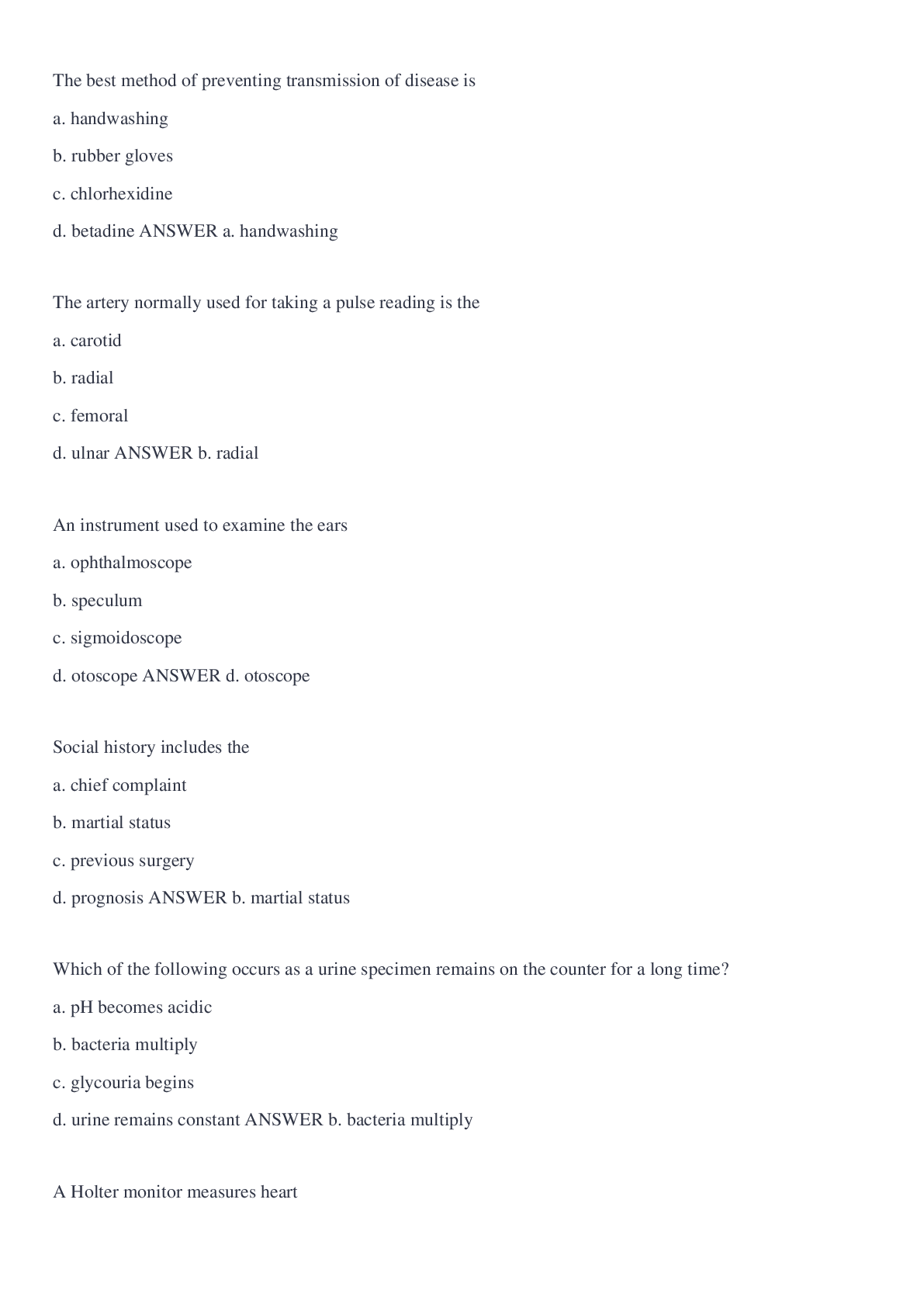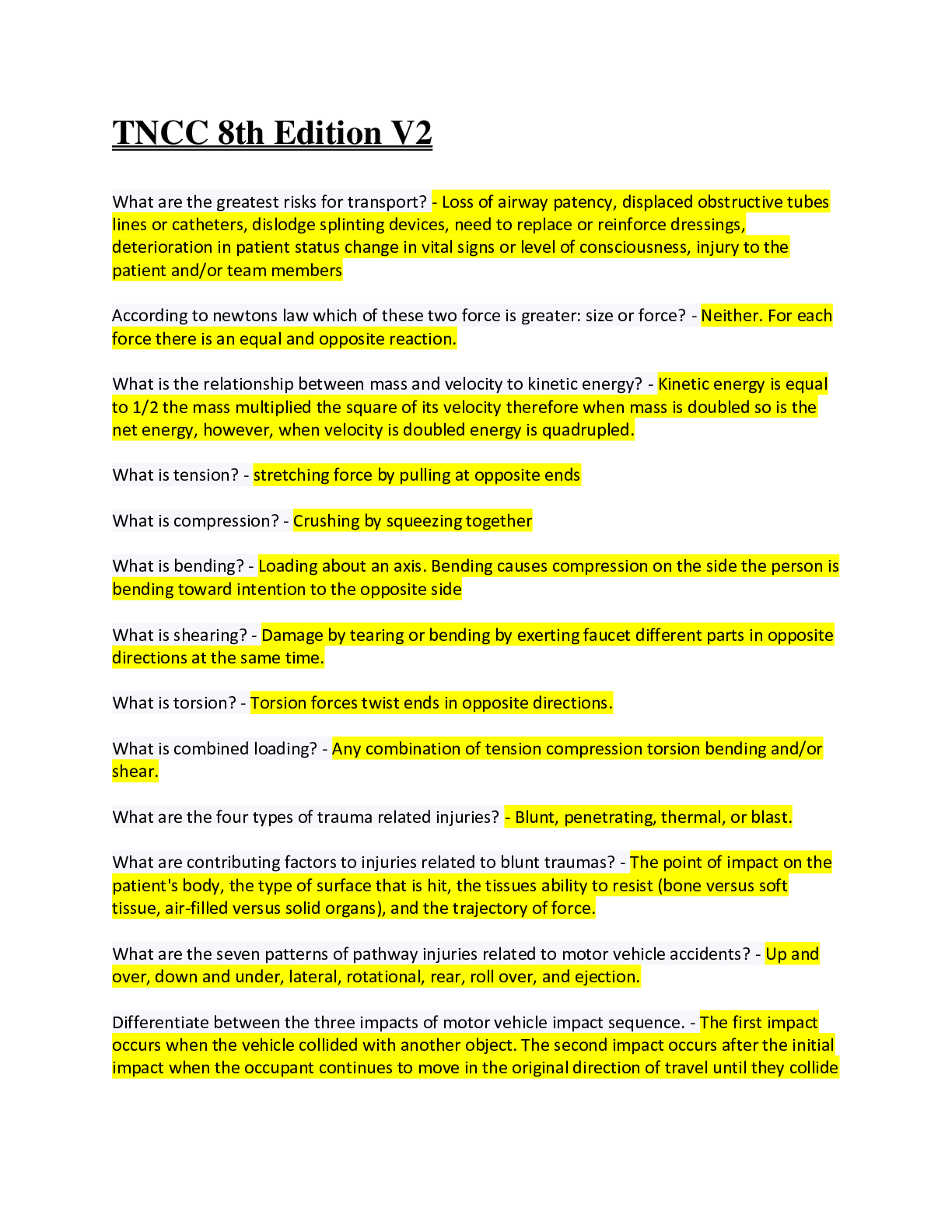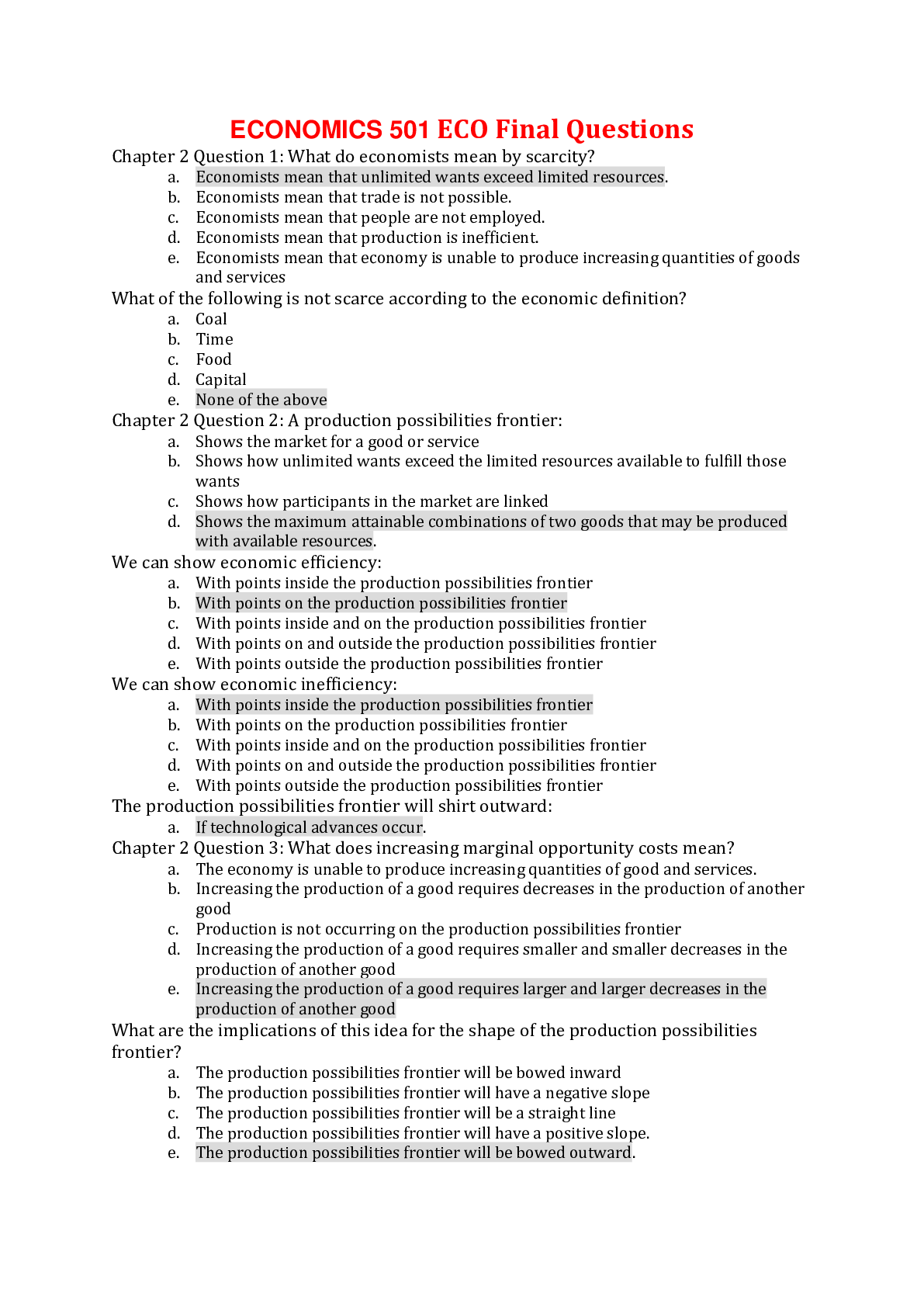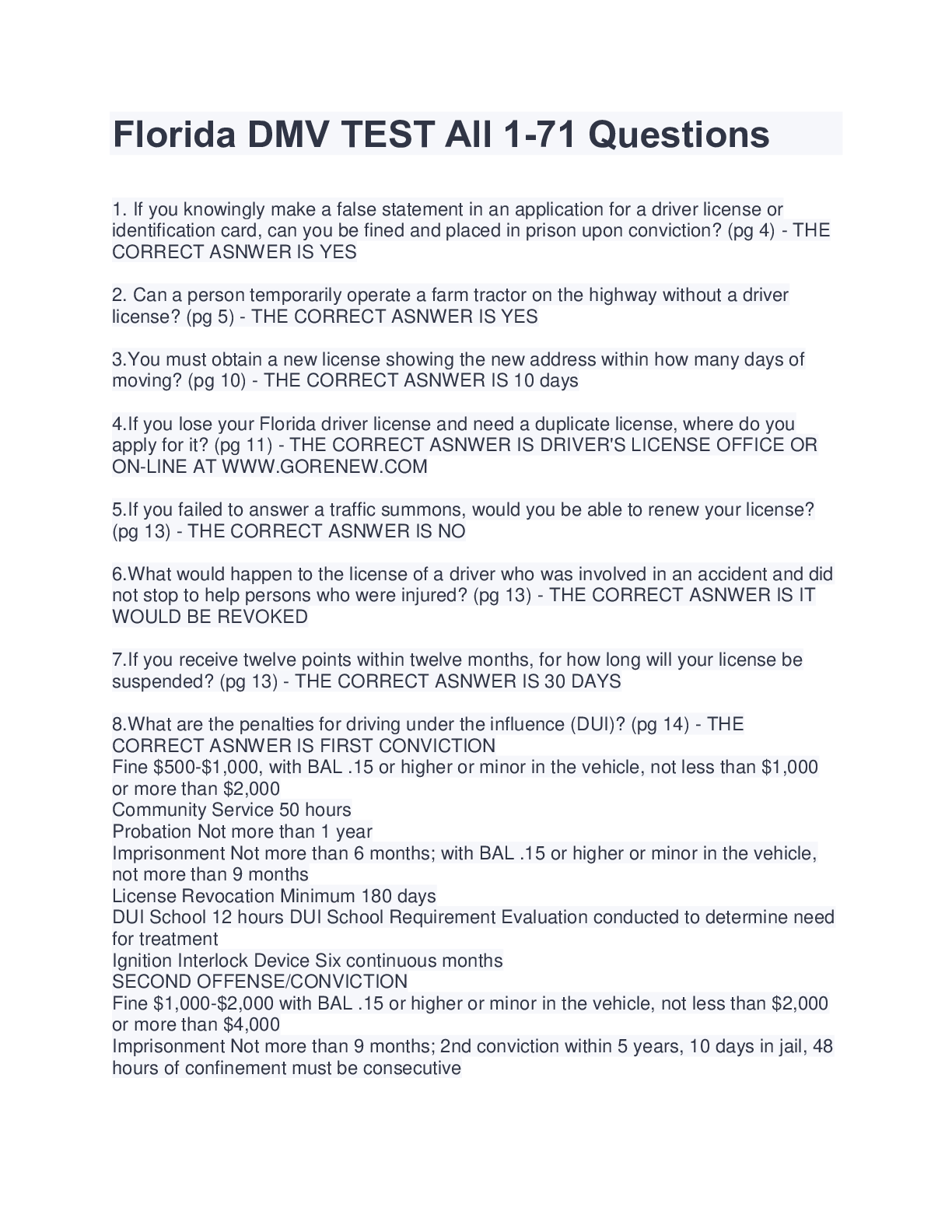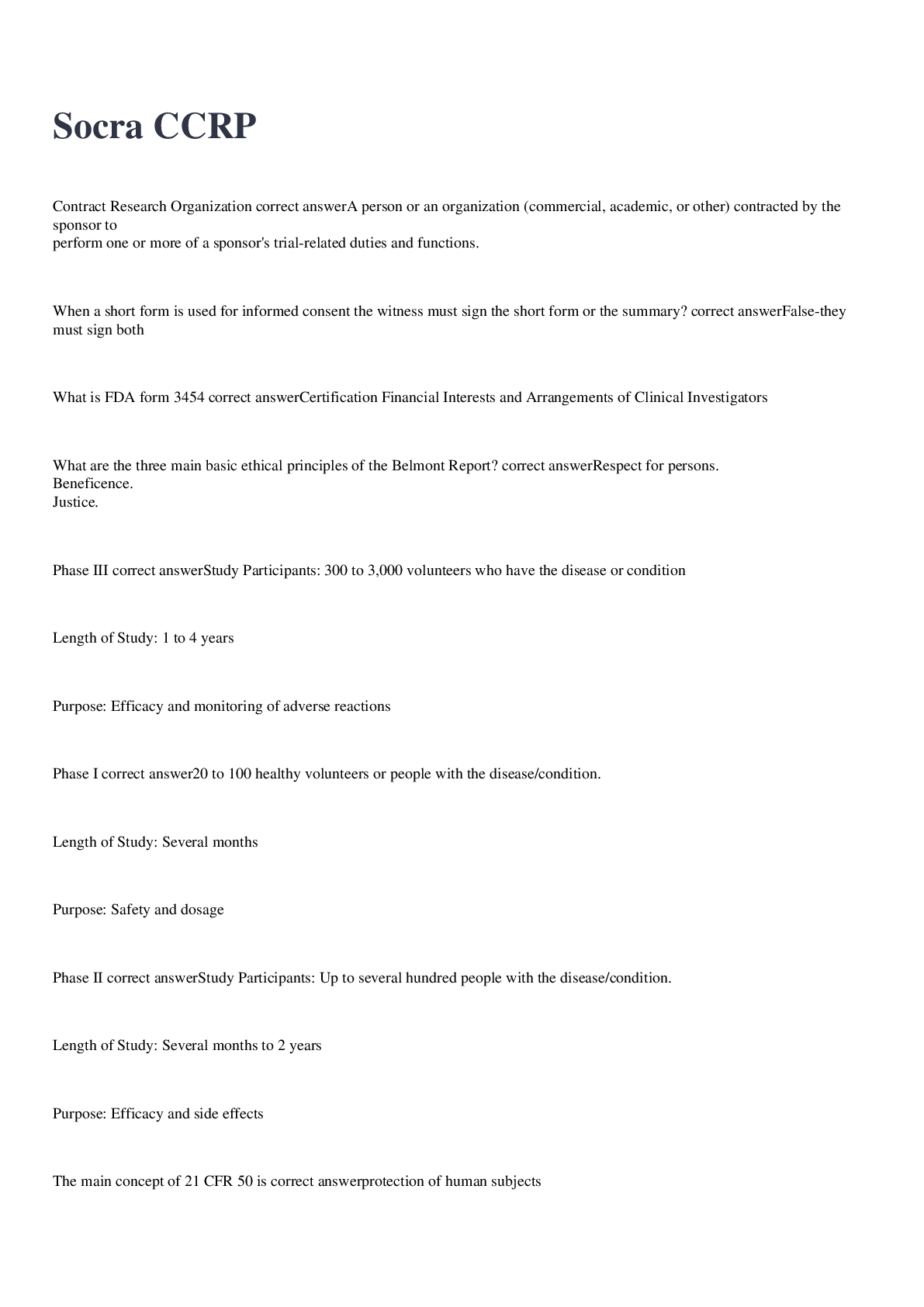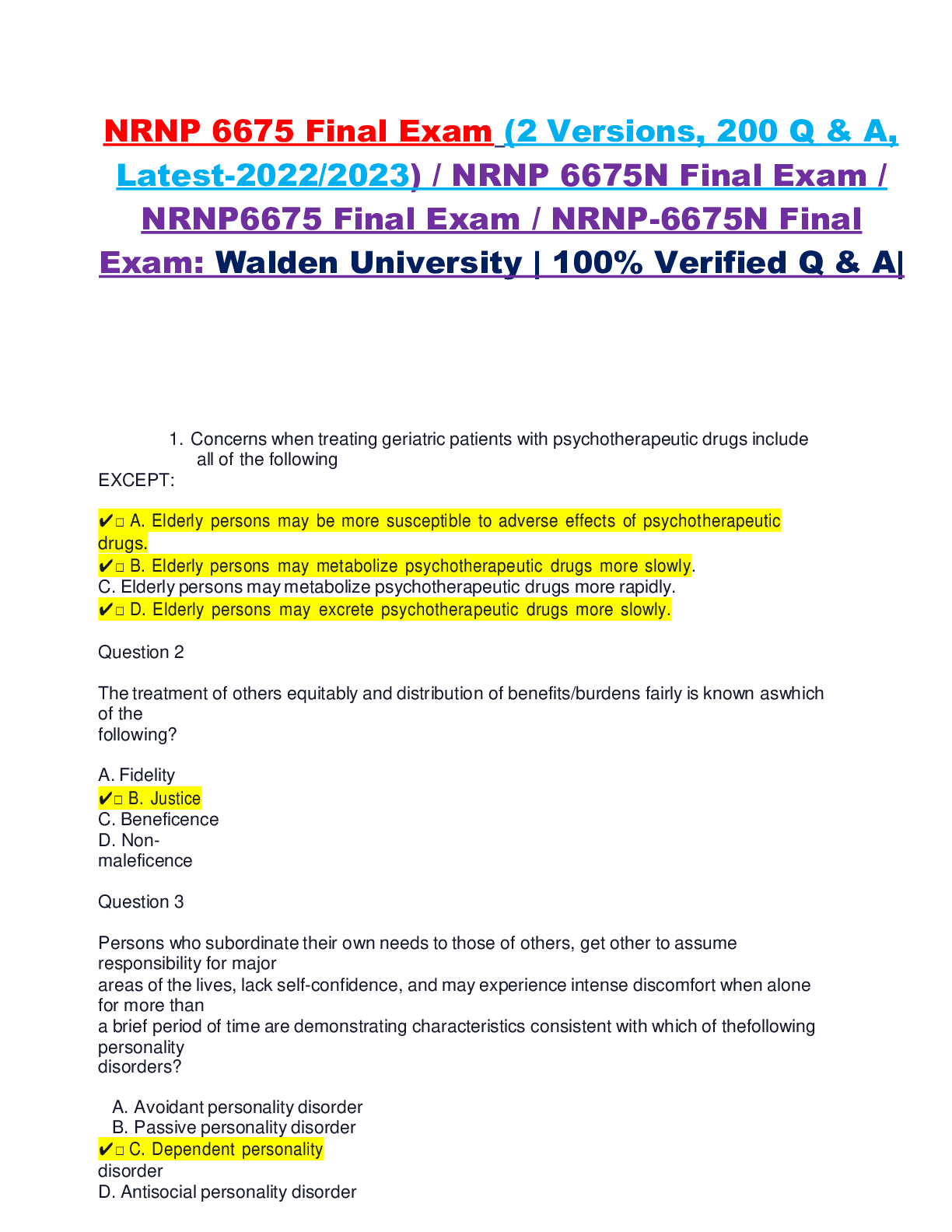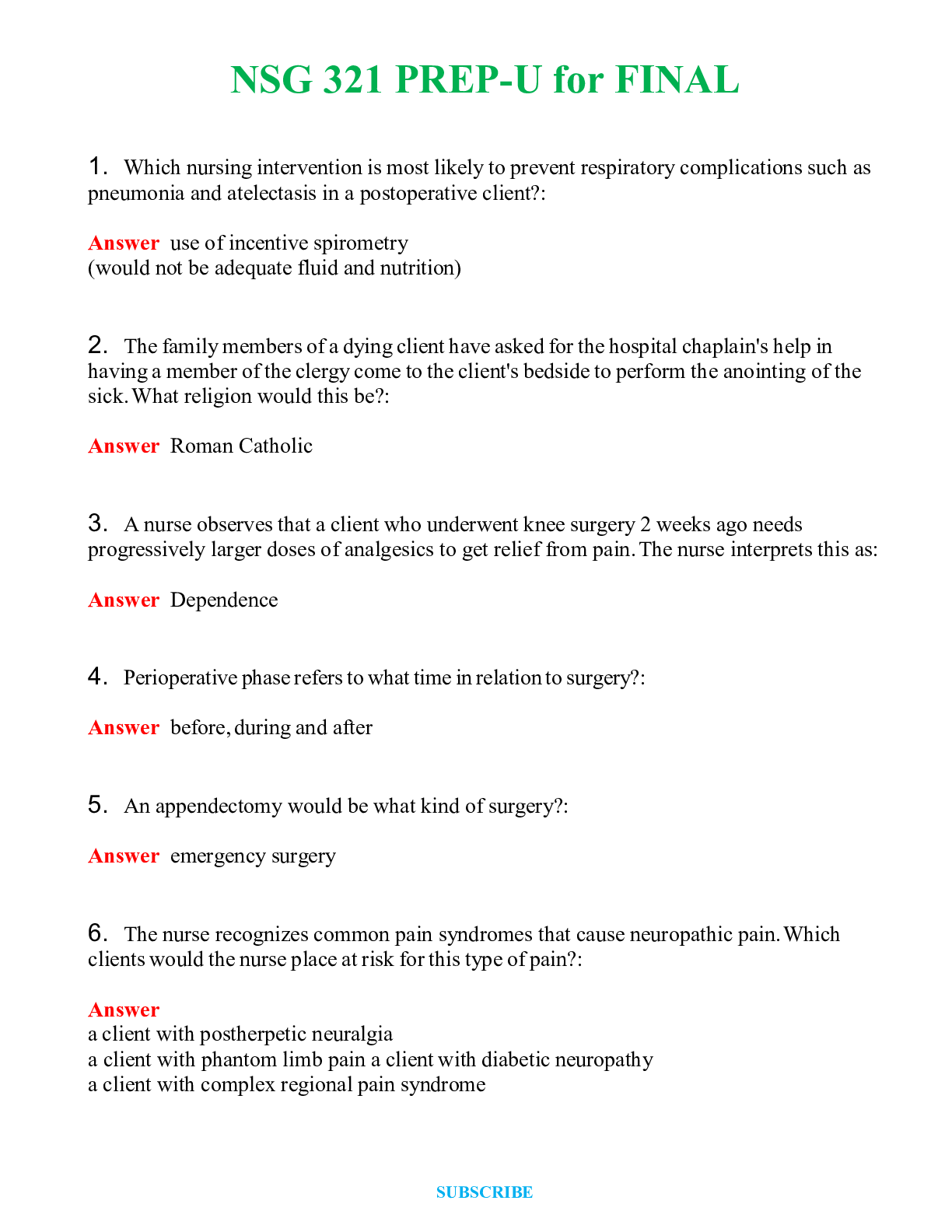Health Care > EXAM > PTCB practice Exam: Health Care system- Q&A (All)
PTCB practice Exam: Health Care system- Q&A
Document Content and Description Below
Health Care system - ANSWER According to the World Health Organization (WHO), a health care system is defined as a system that consists of organizations, institutions, and resources of people whose pr... imary purpose is to improve public health Medicare - ANSWER Provides service for the elderly and disabled individuals (must meet a certain criteria) Medicaid - ANSWER Provides service for lower income individuals. Federally and state funded Tricare - ANSWER AKA military insurance; provides service to veterans and soldiers NIH - ANSWER National Institute of Health Employer Insurance - ANSWER Most employers provide health insurance to full time employees Private Insurance - ANSWER Individuals can apply and pay for health insurance. Smaller businesses offer group rates to their employees. Copay - ANSWER The remaining amount an individual must pay for their medication after insurance. This form of payment is collected at the point of sale (ie the pharmacy) Medicare A - ANSWER Covers inpatient hospital stays Medicare B - ANSWER Covers outpatient hospital stays and diabetic supplies, DME (durable medical equipment), patients on long term disabilities, X-rays, dialysis, vaccines, and respiratory nebulizers Medicare C - ANSWER Additional coverage not covered under A or B. Often called the advantage plan or choice plan. Medicare Part D - ANSWER Covers prescription medications; usually processed by private insurance but funding is provided by CMS (government) Medicare Part E - ANSWER Supplemental coverage; covers A, B, and D (Different than just Medicare C) Medicare C only covers A and B HMO - ANSWER Health Maintenance organization Health Maintenance Organization (HMO) - ANSWER With an HMO plan, you must select a primary care physician (PCP) from .a network of local healthcare providers who will refer you to in-network specialists or hospitals when necessary. All of your care is coordinated through your PCP Lost cost to the insurance and the patient PPO - ANSWER preferred provider organization Perferred Provider Organization (PPO) - ANSWER Recommended list of in-network providers and hospitals -If you choose a provider outside of your network, your copay may be higher -More flexibility= pay more money per month EPO - ANSWER Exclusive Provider Organization Exclusive Provider Organization (EPO) - ANSWER Sort of like a combination between HMO's and PPO's -There is a recommended list of providers and specialists but cannot pick a provider outside of network -You can pick any primary care physician but they must be in-network Workers Compensation - ANSWER When a patient has been hurt at work and his/her company has agreed to pay for the cost of his/her medication out of pocket - ANSWER Individuals without health care coverage and have to pay out of pocket expenses Pharmacy Benefit Managers - ANSWER PBM -Primarily responsible for developing and maintaining the formulary, contracting with pharmacies, negotiating discounts and rebates with drug manufacturers, and processing and paying prescription drug claims. -Working with self-insured companies and government programs; trying to reduce pharmacy expenditures of the plan and trying to improve health outcomes Drug Development - ANSWER Complex and time consuming; on average it takes 8-15 years for a drug to be developed and approved by the Food and Drug Administration 3 Basic Steps of Drug Development - ANSWER 1. Research 2. Testing 3. Approval Research - ANSWER Can be done be pharmacologists, toxicologists, clinical pharmacologists, pharmacists, and physicians -The objective of research is to find a new active ingredient or to modify the structure of existing drugs FDA Regulation - ANSWER The food and drug administration was established in 1906 -Charged with the regulation of medications ensuring their safety and effectiveness before medications are brought to market Where does testing begin? - ANSWER In the laboratory -Stability -Structure -Dosage forms of the drug Tests are done in animals to assess _______ - ANSWER Toxicity - A new drug must be deemed safe before used in humans How many steps is the approval process for testing in humans regulated by the FDA? - ANSWER 4 Human Test Phase 1 - ANSWER Objective: To assess the initial dose and to determine if humans can tolerate the drug (toxicology) -A new drug is tested on a few healthy individuals at the lowest dose and is slowly increased Pharmacokinetics - ANSWER absorption, distribution, metabolism, biotransformation, and excretion Most drugs do not make it past phase _______ - ANSWER 2 Human Test Phase 2 - ANSWER When the drug passes the first phase -The drug is tested on a few hundred volunteers who have the disease the drug is intended for -Extensive data on pharmacokinetic and toxicology profile of the drug are collected in this phase -The optimal dose of the drug is determined in this phase Human Test Phase 3 - ANSWER -Must pass phase 2 - Drug is tested on thousands of patients in a health care setting -Must be randomized, double blind (drug or placebo) controlled study -Test the efficacy of the drug Human Test Phase 4 - ANSWER AKA Post market surveillance phase -The drug has reached an approval by the FDA -Drug interactions, use in pregnancy, and long term side effects are examined -Pharmacists and patients are encouraged to report side effects to the FDA through medwatch Pharmacists/Patients are encouraged to report side effects to the FDA through ________ - ANSWER Medwatch Steps to Drug Use Process: - ANSWER 1. Storage 2. Distribution 3. Prescribing 4. Dispensing 5. Moniotring Practitioners with Prescriptive Authority: - ANSWER - Physicians (MD) - Doctor of Osteopathy (DO) - Veterinarian (DVM) - Opthamologist (OD) - Podiatrist (DPM) - Nurse Practitioner (NP) - Physician's Assistant (PA) MD - ANSWER Physician DO - ANSWER doctor of osteopathy DVM - ANSWER Doctor of Veterinary Medicine OD - ANSWER Ophthalmologist DPM - ANSWER podiatrist NP - ANSWER nurse practitioner PA - ANSWER physician's assistant Pharmacy - ANSWER A site licensed by the board of pharmacy to dispense or compound prescriptions Drug Store - ANSWER A place where drugs are sold that do not require a prescription (OTC) Who is the only person unable to handle medications in a Pharmacy - ANSWER The clerk/cashier Some things a technician cannot do: - ANSWER - Accept new orders over the phone - Counsel patients/recommend OTC items CEU's - ANSWER continuing education units; 20 units of CEU must be completed every 2 years upon passing technician certification 3 Classes of Medication Recalls - ANSWER - Class I recall - Class II recall - Class III recall Class I recall - ANSWER A situation in which there is a reasonable probability that the use/exposure to a violative product will cause serious adverse health consequences or death Class II recall - ANSWER A situation in which use/exposure to a violative product may cause temporarily/medically reversible adverse health consequences or where the probability of serious adverse health consequences is remote Class III recall - ANSWER A situation in which use of or exposure to a violative product is not likely to cause adverse health consequences More common types of recalls: - ANSWER - Market withdrawal - Medical Device safety alert Market Withdrawal - ANSWER When a product has a minor violation that is not subject to FDA legal action. The firm removes the product from the market or corrects the violation. Ex: Tampering without evidence of manufacturing/distribution problems Medical Device Safety Alert - ANSWER Issued in situations where a medical device may present an unreasonable risk of substantial harm What to do when notified about a recall? - ANSWER - Immediately pull the medication (see if you have the specified lot) -Expose of/return the medication - Notify patients Do not dispose of/give medication to patients! (Return to supplier) Tablets - ANSWER Leave a chalky film on the countering tray - Monitor and clean when necessary - Can be scored to give fractional dosing When must you clean a counting tray? - ANSWER After counting medication containing: -Penicillin (or a derivative) -Sulfa (or a derivative) Buccal Tablets - ANSWER Placed in area between cheek and gums Sublingual Tablets - ANSWER Placed under the tongue Chewable Tablets - ANSWER Chewed [Show More]
Last updated: 1 year ago
Preview 1 out of 46 pages
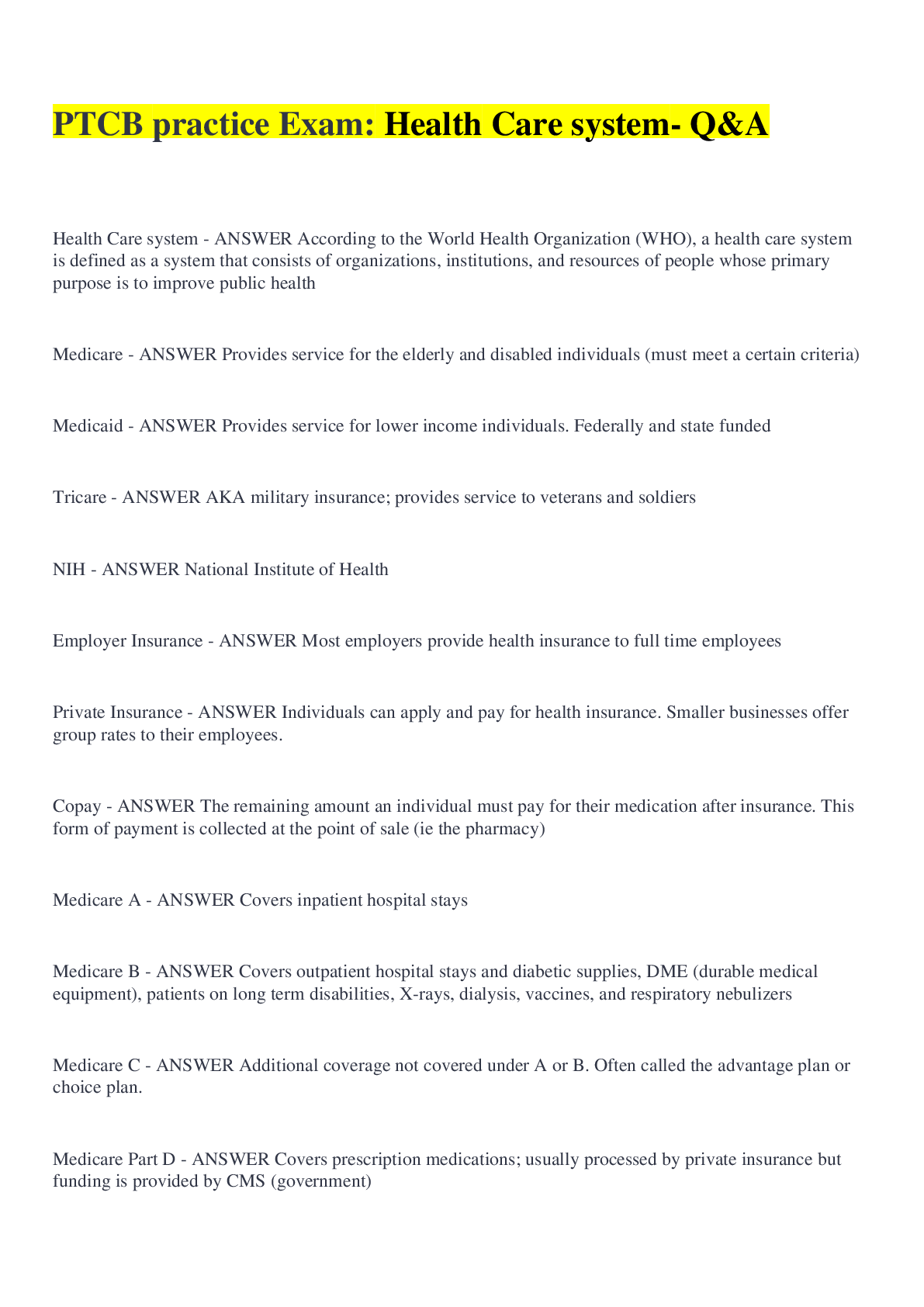
Reviews( 0 )
Document information
Connected school, study & course
About the document
Uploaded On
Aug 31, 2022
Number of pages
46
Written in
Additional information
This document has been written for:
Uploaded
Aug 31, 2022
Downloads
0
Views
29



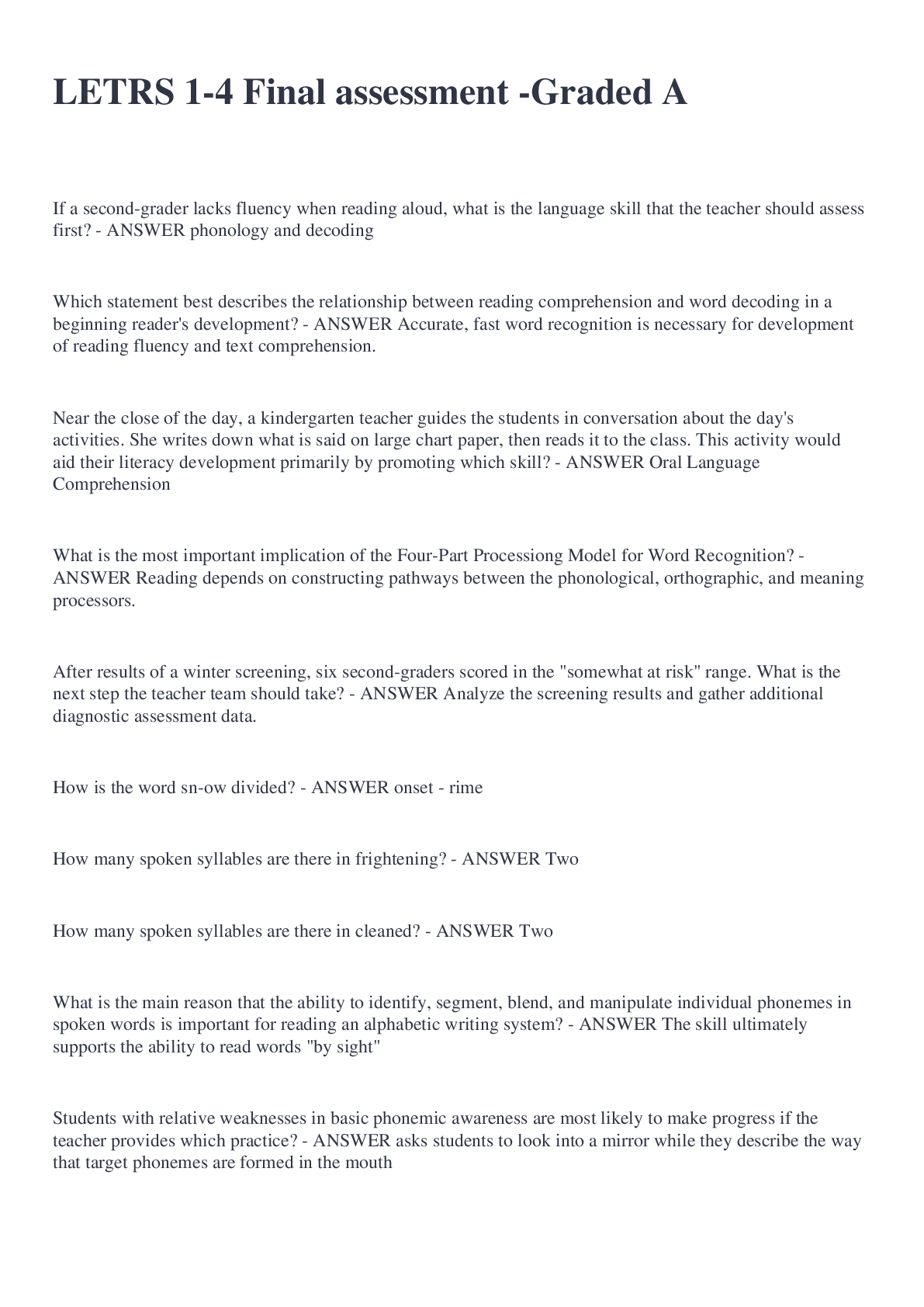


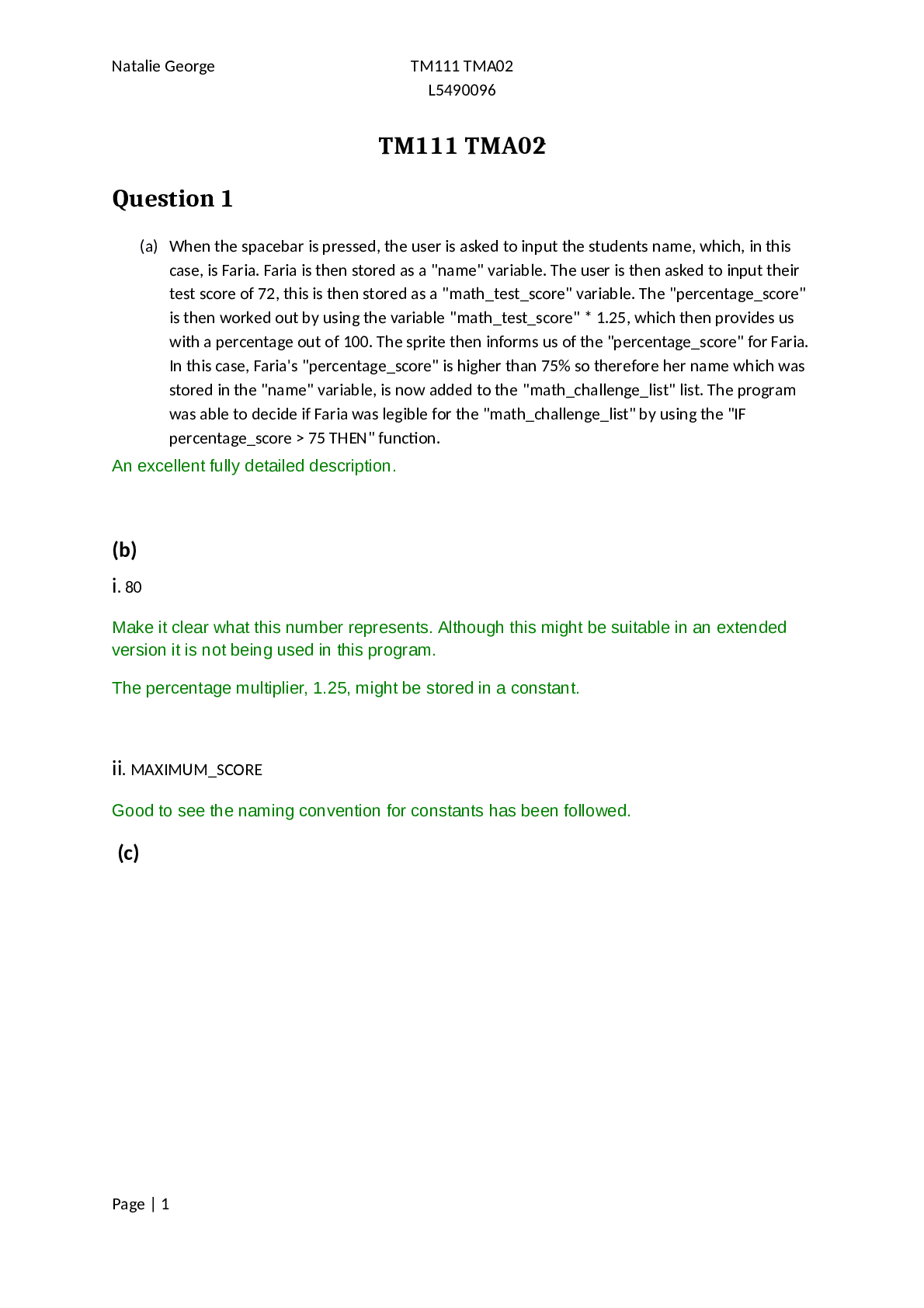


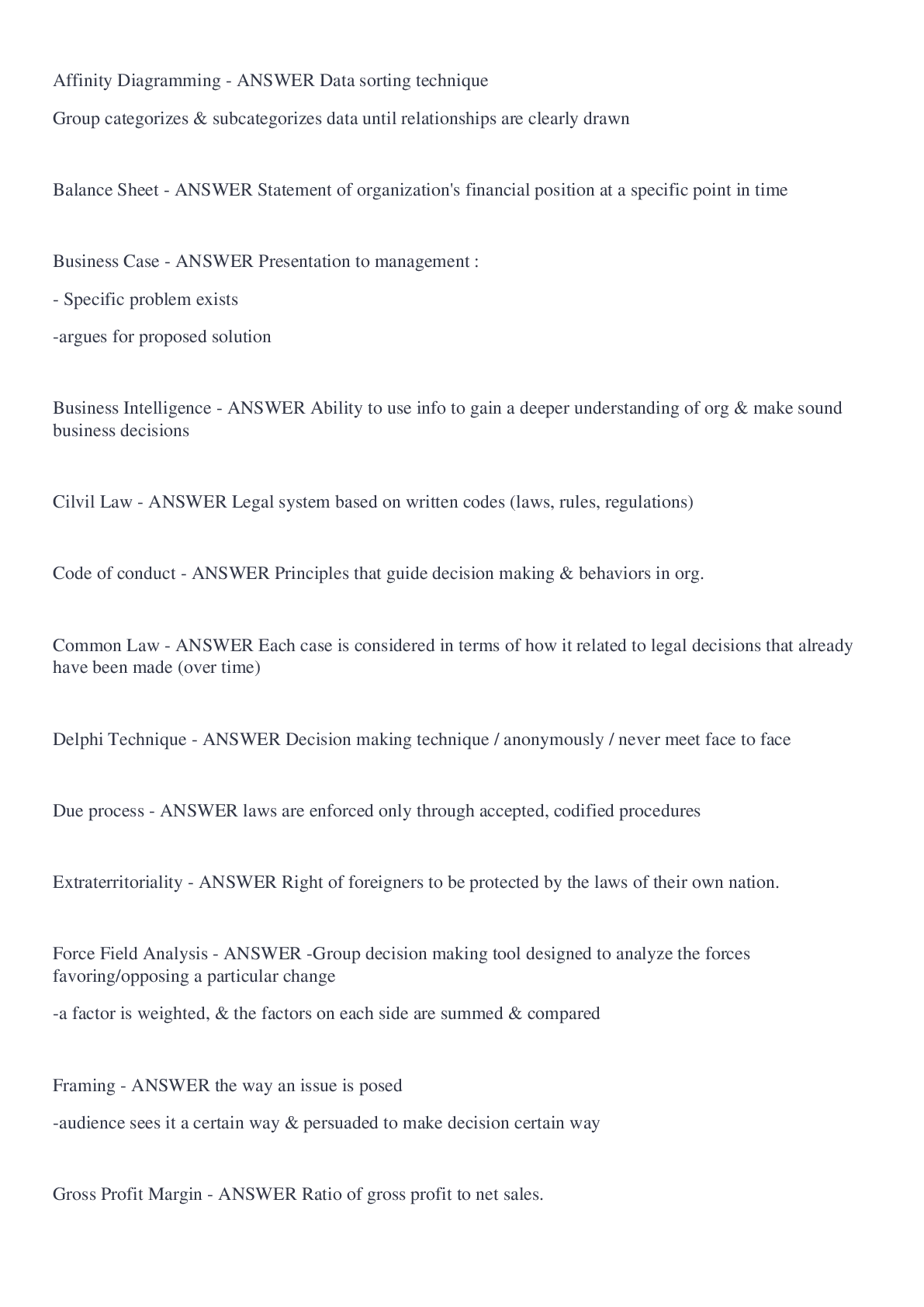

.png)
